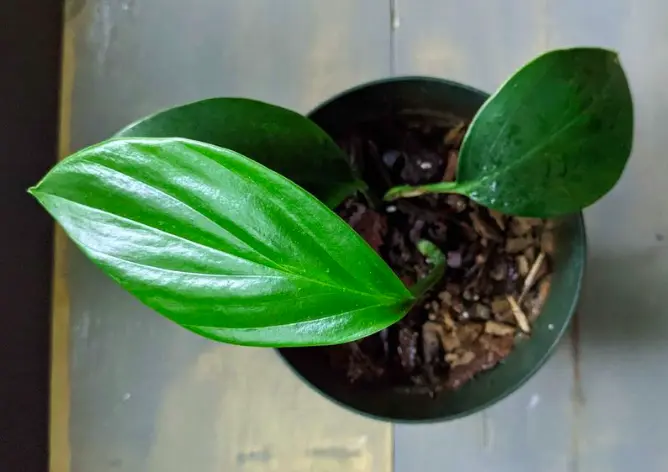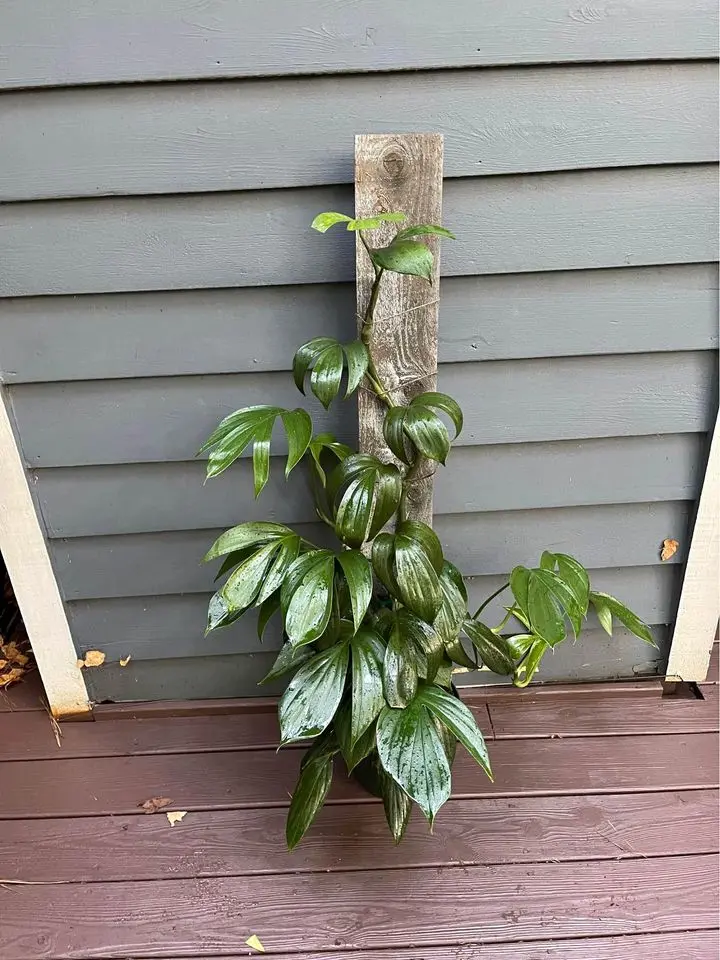The Dragon Tail Plant can grow up to 1 meter as a vine with its elliptical to arrow-shaped leaves. It originates in Asia and Australia, mainly in the tropical and subtropical regions. In these regions, they can be found as cover crops under shades of taller trees in warm environments.
Dragon tail plants have unique and beautiful green foliage. They serve as ornamental plants, and I highly recommend them for beginners because they are easy to grow and maintain. Are you wondering about the name? Then look at a stem through the leaves, shaped like a dragon’s tail.
How to Grow the Dragon Tail Plant

Like stem cutting, growing the dragon tail plant with seeds is rare. The seeds are not easy to find, so it is preferably propagated by stem cutting or buying a nursery plant from a trusted vendor.
It is effortless to propagate the plant using stem cuttings. You should follow the steps below to get it right:
- Find a healthy dragon tail plant and cut off a stem with two to three leaves accompanying it.
- The cut should be slightly below the nodes, at most 1.5cm.
- Remove the lower leaves from the stem cutting.
- Place the nodes of the stem inside a water jar or container.
- Monitor the water level and ensure it is always above the nodes. Top the jar with water when it appears falling below the nodes.
- After four to six weeks, roots will appear, and it will be safe to transplant to the appropriate potting mix.
I will recommend that you propagate with stem cutting during the summer. Root formation is fastest during warmer periods, although cutting may be done anytime.
How to Care for the Dragon Tail Plant

You do not have to worry about caring for the plant. It is so easy that dragon tail plants are usually recommended for beginners.
The Dragon Tail Plant is adaptable, for despite originating from the warm tropics, it does extraordinarily well as an indoor plant. But I will show you some conditions that will aid the growth and ensure the plant thrives under your care.
The Light Requirement for the Dragon Tail Plant
The plant requires a space with medium to bright light. Keep the plant out of direct sunlight; when indoors, you should place them far away from the windows.
In their originating environment, they are usually shaded from direct sunlight but have access to bright light. Replicating this scenario will improve the quality of your dragon tail plant.
Soil Requirement for the Dragon Tail Plant
You can get a potting mix from your local store. The plant thrives on well-drained soil, and adding perlite, coco coir, and organic matter will help improve the draining capacity of your regular soil mix.
Temperature and Humidity Requirement
The plant will thrive under most climatic conditions, but it will thrive in warmer conditions. You may not be overly concerned about the humidity, for the plant gets its water mainly from the root.
However, you can go the extra mile by misting the leaves. Increasing the humidity may not be necessary, but it will keep your plant healthier.
Watering the Dragon Tail Plant
Watering the plant is one of the slight technicalities of caring for the plant. The plant requires regular watering, but it is best to ensure that the soil is dried to a depth of 3-5 cm before watering.
I know some people use water calculator techniques to determine the dryness of the soil. And some technologies can help you measure when to water the soil.
Trellising or Using Vine
Your dragon tail plant can also be grown on a trellis. They are vining plants and can climb, growing vertically with the proper support. And depending on the materials and care given, they can develop roots on the trellis or support.
Repotting the Dragon Tail Plant
You should repot the Dragon Tail Plant once a year. Or rather when they have outgrown or doubled their size. Use a fresh soil mix to boost your plant’s growth when repotting.
Fertilizers Requirement for the Plant
You may decide not to use fertilizers since they are repotted with fresh soil mix yearly. And since they can adapt to most well-drained soil conditions, you can do without fertilizers.
Pest and Diseases of the Dragon Tail Plant
The Dragon Tail Plant is highly resistant to common pests and diseases. But are susceptible to houseplant pests such as mealybugs, root rotting, and yellowing of leaves.
Frequently Asked Questions
Is the dragon tail plant toxic?
The plant is toxic when digested by man and animals when digested, and they can cause irritation, stomach upset, and oral pain. You should place the plant out of the reach of children and pets.
What Causes Leaves To Yellow?
Yellowing of leaves may occur due to a lack of water for the plant. You should check the soil dryness and water to help revive the plant.
Why are my leaves drying out and losing their color?
Check your light condition, and ensure no direct sunlight on the plant. Direct sunlight will dry up the leaves faster than they get their water.
